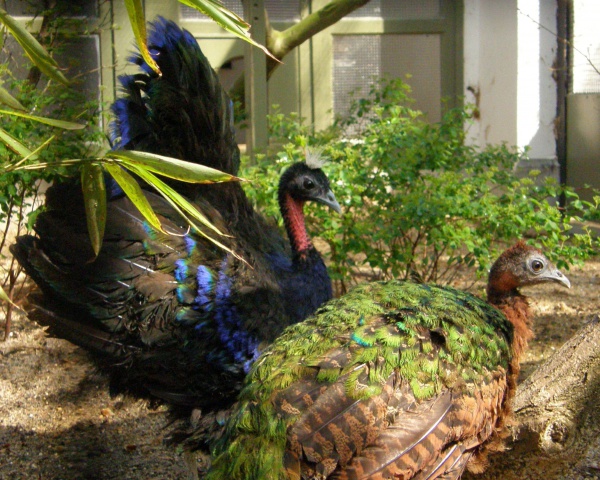Facts About Congo peafowl
The Congo peafowl, also known as the African peafowl or "mbulu" by the Bakôngo people, is a fascinating bird indigenous to the Congo Basin. It is one of three extant species of peafowl, alongside the Indian peafowl and the green peafowl. First described in 1936 by Dr. James Chapin, the Congo peafowl was initially mistaken for the Indian peacock due to their similar appearance. Intriguingly, the Congo peafowl exhibits characteristics of both peafowl and guineafowl, suggesting a potential phylogenetic connection between these bird families.
The male Congo peafowl is a striking bird with blue plumage, a metallic green and violet sheen, red skin on its neck, and a black tail. Conversely, the female is chestnut brown with a black belly and a metallic green back. Both sexes resemble young Asian peafowl. Their diet consists primarily of fruits and insects, and their mating behaviors are akin to those of other peafowl species.
These birds are exclusively found in the Central Congolian lowland forests of the Democratic Republic of the Congo. Unfortunately, they are threatened by habitat destruction due to mining, shifting agriculture, and logging. Consequently, the Congo peafowl is listed as Vulnerable on the IUCN Red List, with an estimated wild population of only 2,500 to 9,000 adult individuals. Conservation efforts include captive breeding programs at institutions such as the Antwerp Zoo and Salonga National Park.

 Central African Republic
Central African Republic